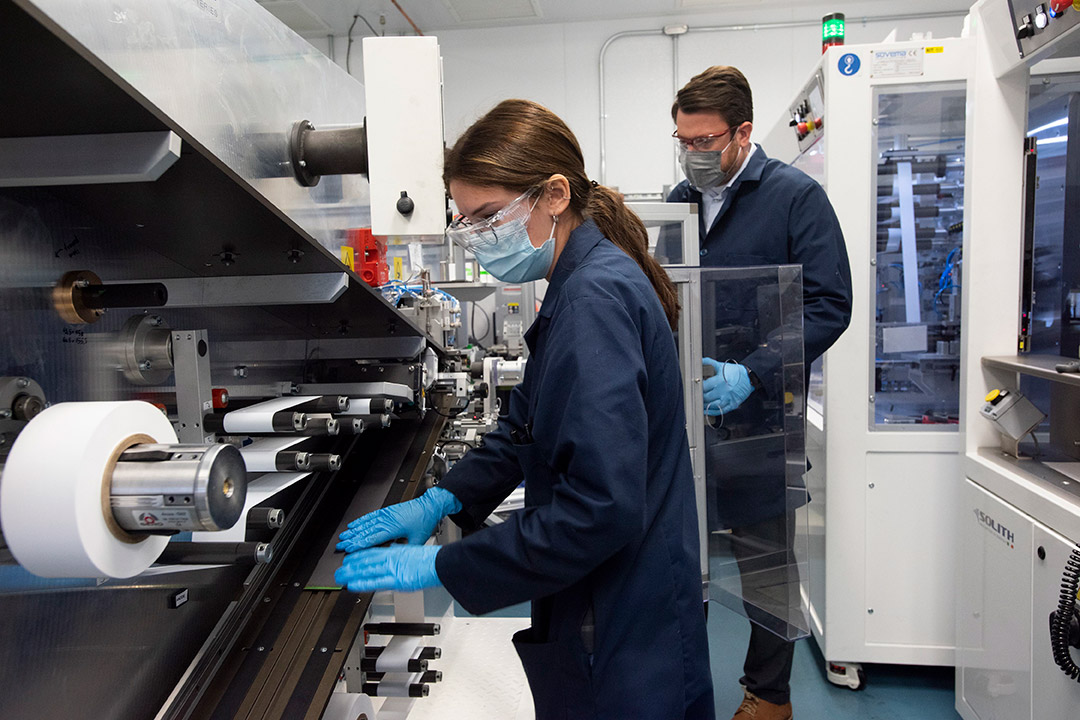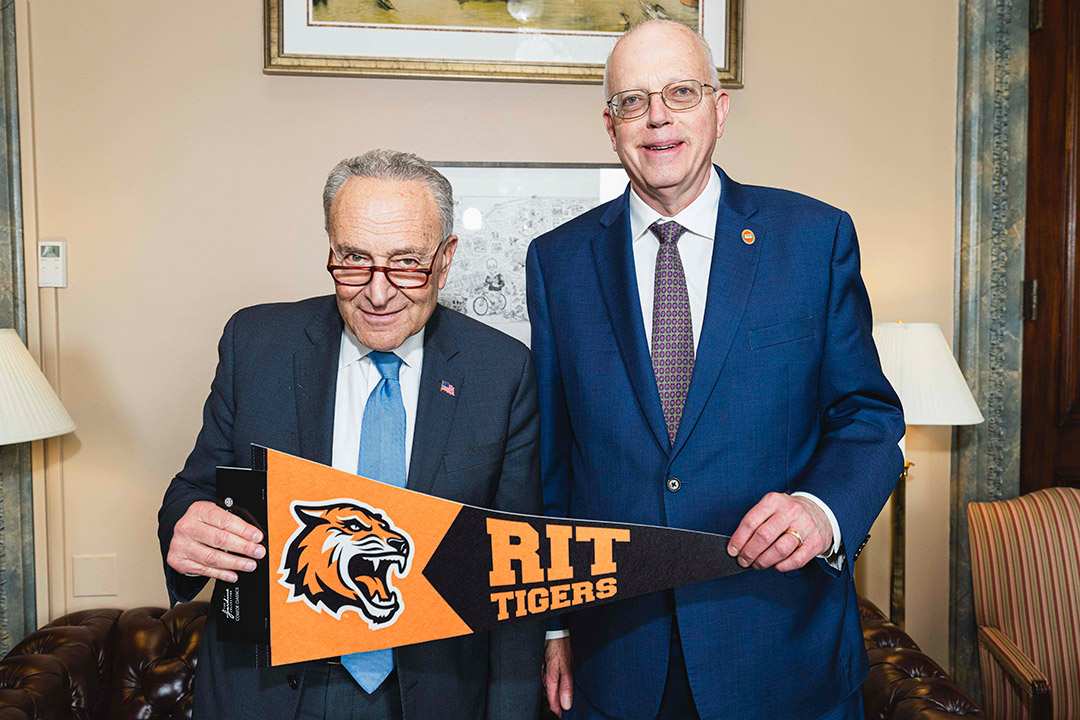University secures expansion funding for Battery Prototyping Center
Center expansion at RIT is part of national effort to increase services, research, and opportunities for energy storage technology
Carlos Ortiz/RIT
Matt Ganter, director of the Battery Prototyping Center at RIT, discusses how lithium-ion batteries are tested and produced. The center, recently awarded funding to expand its lab, is seeing increased demands for services, research, and testing through regional and national partners.
Rochester Institute of Technology received $1.25 million in funding from the recent appropriations bill to expand its Battery Prototyping Center. The funding will be part of national directions to strengthen the battery ecosystem in the U.S. The market for battery technologies continues to grow at an unprecedented rate, with global demand expected to increase five-fold by 2030.
Funding for the expansion came through a national appropriations bill, supported by U. S. Sen. Chuck Schumer (D-N.Y.), who included it in his funding requests to congressional agencies for key infrastructure, science, and economic development initiatives. With federal investment, the facility will be regarded as an essential asset to New York state as well as the country as a global leader in battery manufacturing.
“RIT’s Battery Prototyping Center is a vital resource to foster the development of new companies and jobs focused on next-generation lithium-ion-cell technologies and materials. This funding will supercharge RIT’s current work with over 100 industry, government, and academic customers to push the frontiers of energy storage technology while helping to attract and grow new businesses here in New York,” said Schumer. “The $1.25 million investment for RIT’s new expanded Battery Prototyping Center will make Rochester and the Finger Lakes a global epicenter for the battery industry.”
The expansion project represents phase three of the construction of the center, established in 2014 as part of the New York Battery and Energy Storage Technology (NY-BEST) consortium. Created to position the state as a leader in energy storage technology, including applications in transportation, grid storage, and power electronics, RIT’s Battery Prototyping Center provides comprehensive services to more than 125 active members of the NY-BEST Consortium. The center has seen increased requests for research, workforce development training, product testing, and development in battery manufacturing.
Provided/RIT
Senator Chuck Schumer and RIT President David Munson.
“Batteries are an essential component of modern technology and key to an economy that is no longer tied to a dependence on fossil fuels. Overall growth is being driven by many diverse sectors using this technology. Our congressional leaders, U.S. Sens. Chuck Schumer and Kirsten Gillibrand and U.S. Rep. Joe Morelle, recognize the need to advance these sectors and we thank them for the confidence they have in RIT to contribute to these important efforts,” said RIT President David Munson. “RIT and its Battery Prototyping Center is prepared to lead the efforts toward meeting the exciting and increasing demand across the entire battery value chain. This technology and its many applications will generate millions of jobs worldwide.”
The center was established with the support of New York state through a $1.8 million investment from the New York Energy Research and Development Authority (NYSERDA) and Empire State Development with $2 million in matching funds from RIT. RIT has also contributed more than $1.5 million in staffing costs for the center since its inception.
The original construction of the center included a 1,000-square-foot dry room, a moisture and humidity-free environment required for lithium-ion battery manufacturing. Within the dry room, a semi-automated lithium-ion pouch battery manufacturing line was installed, creating the ability to replicate a product, while maintaining quality. This line could produce state-of-the art lithium-ion pouch batteries, such as those used in cell phones and laptop computers.
Recognizing the importance of the Battery Prototyping Center and its contributions to the state’s battery and energy storage ecosystem, additional support was provided by state and congressional representatives to extend the capabilities of the unique types of larger cylindrical batteries used in many military and space systems and many electrical vehicles, such as those produced by Tesla Motors. To date, the center has attracted an additional $4.3 million in federal research funding and $1.8 million in fees through 49 different corporations and four national lab users.

